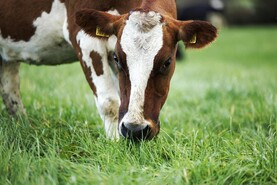How much meal to feed is a perennial question on the minds of dairy farmers.
Now that grass growth rates are good and the weather seems to have settled down, can farmers reduce what meal is being fed?
The answer to that is yes, of course.
There’s a saying I like to use - grass is enough when there is enough grass, which translates to when there is enough grass on the farm, the cow doesn’t need meal.
Return from meal
Now, many farmers and merchants will argue that there is a return from feeding meal in the summer, and there is. The return is typically about 0.7kg of milk for every 1kg DM of meal fed.
The first thing to note is that dairy rations are typically 15% moisture, meaning a farmer needs to feed 1.17kg of meal fresh weight to get 1kg of dry matter.
If meal costs €290/t, that works out at 34c/kg dry matter or 29c/kg fresh weight. If the farmer feeds 1.17kg of meal per cow per day, the cost will be 34c/cow/day.
From this, the return in meal is likely to be 0.7kg, which at 36c/kg milk price, is worth 25c/kg. So the farmer is spending 34c/day to get 25c/day.
Other benefits
There are other benefits to feeding some level of meal, such as a means to feeding essential minerals, and it also improves cow flow at milking.
However, feeding meal to get an economic return during the summer months is questionable, at least for the majority of farmers.
Farmers who get a high response to meal need to look at their grassland management.
If grass quality is bad, the response to meal will be higher, but if grass quality is good, the response will be less, as the cow is already expressing her genetic potential on good-quality grass.
There is no issue with feeding a small quantity of meal for the summer months to aid cow flow and carry minerals.
However, this can be achieved in 1kg or 1.5kg of meal per day. Feeding any more than this is questionable.






 This is a subscriber-only article
This is a subscriber-only article











SHARING OPTIONS: